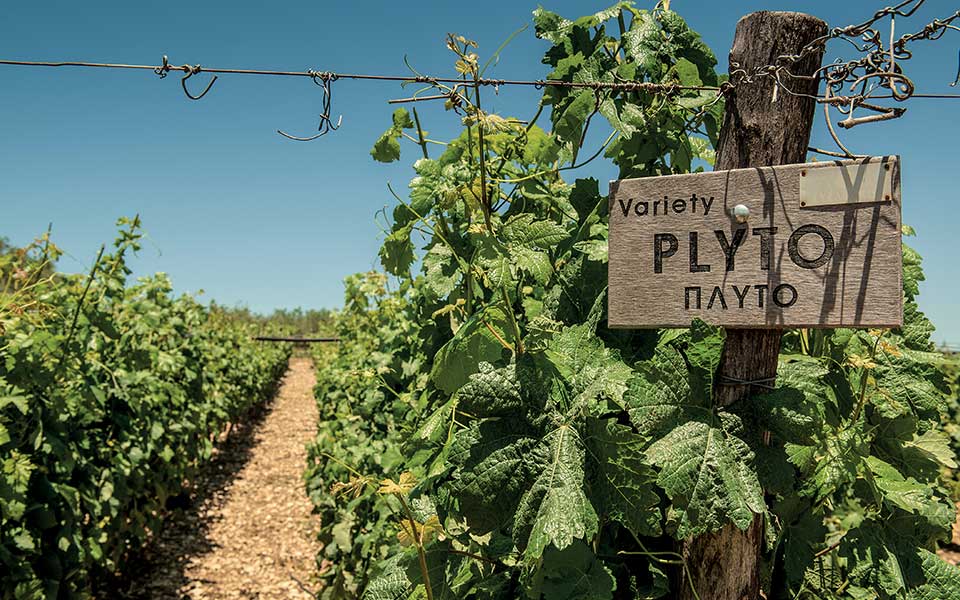Cretan wine has come a long way since the beginning of the 20th century, when Sir Arthur Evans discovered an ideogram for the word “wine” in a sample of Linear B – the earliest attested form of Greek script – in Knossos. The Cretan wine industry has only recently shifted to high-quality production, after decades of turning out bulk quantities of highly oxidized “rocket-fuel” wine.
The leap in quality over the last few years is extremely impressive, and can be attributed to a number of factors. These include the emergence of a new generation of producers who, having studied abroad, are bringing back innovative ideas. Add to this the fascinating mosaic of indigenous grape varieties, the explosion in tourism and the focused efforts of the Wines of Crete network, and you can see why Cretan wine is coming on in leaps and bounds.
According to Wines of Crete, there are more than 80 producers on the island, with some excellent efforts in Hania and in Sitia, with Yiannis Economou raising the bar to stratospheric heights. But the heartbeat of this renaissance is felt primarily in the broader Irakleio (Heraklion) area. These terroirs, which have existed for ages, are home to around 50 producers that make up 90% of total production.
White Vidiano (also known as the Greek Viognier) and the singular perfumed red Liatiko tend to receive the most attention here, but there is a multitude of other indigenous varieties worth discovering too, such as Kotsifali, Mandilari, Thrapsathiri, Vilana and Dafni. Let’s not forget the Cretan version of Assyrtiko, either, or the unsung Rhone-like reds.
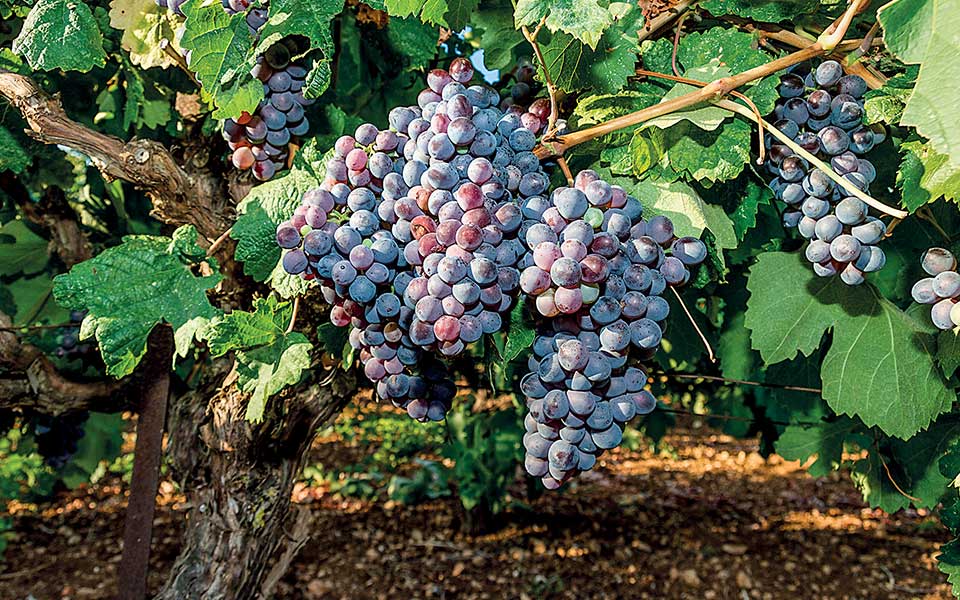
© visualhellas.gr
A TOAST TO HISTORY
The grapevine has seen around 4,000 years of systematic cultivation in Crete. It should be no wonder, then, that one of the oldest wine presses in Europe (dating back 3,500 years) was discovered around 9km from the city of Irakleio, in Vathypetro, a place well worth visiting if you want to feel the energy of this rich past.
Another option for visitors is the Palace of Knossos which is located 4.5km from the city, and which was the ceremonial and political center of the Minoan civilization and culture for many years. I find myself lost for words every time I visit. Apart from the palace of King Minos with its throne and royal chambers, you can also see impressive amphorae here, as well as vast underground wine storage facilities, and drawings that illustrate not only the central role that wine played in life on the island, but also the sophisticated methods that the Minoans had for producing it.
MY WINE ROUTES
Visiting these historic sites early in the morning always allows me plenty of time to fit in a couple of winery visits. There are many excellent wineries that are waiting to welcome you and show the best they have to offer. There are three PDOs (“Protected Designation of Origin” areas) around Irakleio – Dafnes, Archanes and Peza – but their importance has diminished over time, with many wines operating outside the PDO classification system.
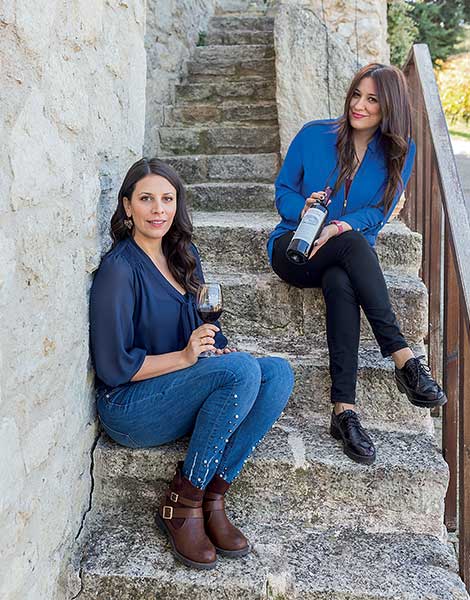
© Effie Paroutsa

© Effie Paroutsa
The Dafnes Zone
The Dafnes Zone takes its name from a village dating perhaps to the 11th century; it’s one of the most important terroirs, blessed with a large quantity of limestone in the soil. It’s located 18km south of Irakleio at an elevation of 500m in gentle, rolling, Tuscany-like hills planted with vines and olives.
According to historical documents, wine from Dafnes has been well known since 1271. There are many excellent wineries to visit near the village, with most of them focusing on reds produced from the signature grape of the region – Liatiko.
Douloufakis is a third-generation winemaker regarded as the expert on Vidiano, producing four different labels and styles of this lovely white. He also produces reds from Liatiko and other varieties. His winery is very much Italian-influenced, with warm red-brick colors dominating, and he himself is an excellent host.
Next door are the wineries of Silva, Idaia and, a little further to the south, near Asites, Diamantakis. Silva is very much into the “hands -off” approach, with a strong emphasis on organics and biodynamics; they offer three different wine tours here.
Idaia, located in the village of Venerato, focuses almost exclusively on local Cretan varieties with great Vidiano and Thrapsathiri wines, and a promising new Liatiko as well.
Diamantakis has impressive vineyards, with some of them planted right next to the winery, in terraces of poor, rocky soil at 500m above sea level. A walk with Diamantakis to the pergola laden with Vidiano vines is an experience worth seeking out.
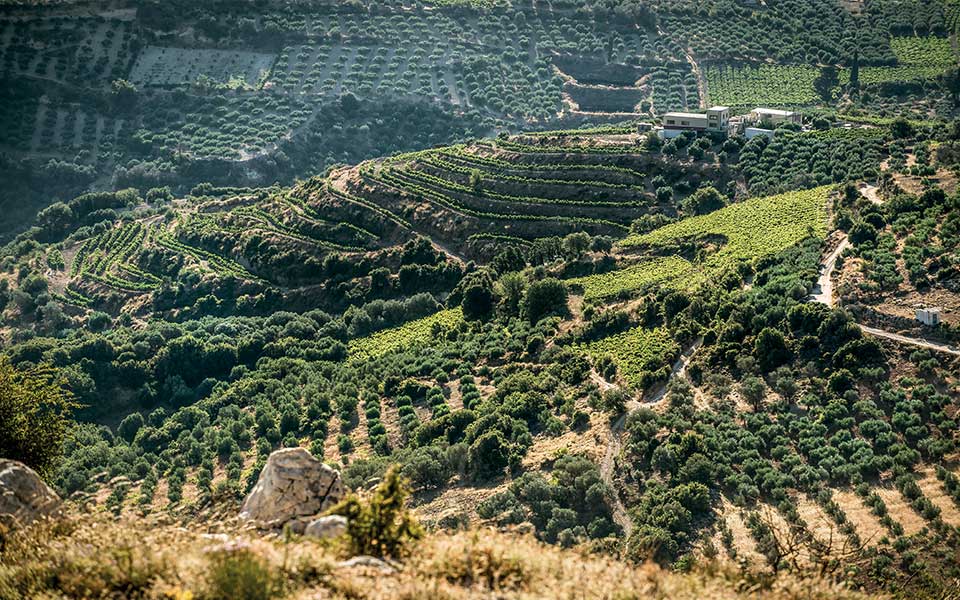
ARCHANES AND PEZA
In his work “Taxidiotika,” the famous Greek novelist Stratis Mirivilis described how his friends took him to Archanes to see the vineyards there. He was so impressed with them, and with the area’s breathtaking beauty, that he declared that “the Temple of Dionysus should have been located here.”
Kotsifali and Mandilaria are the ingredients of a signature blend that delivers a Cretan red full of ripeness and Mediterranean sun and with a velvety texture. The area of Peza, in the eastern part of the region, produces reds similar in style, but also places emphasis on Vilana planted at 700m above sea level. This latter variety is one of the most planted whites in Crete.
There are many quality-focused wineries to be found in this region. From north to south, the options include Minos-Miliarakis in Peza village, Rhous, Paterianakis and Lyrarakis. Miliarakis offers a unique tasting session (by appointment) held in a picturesque “vineyard house” at the top of a small hill thickly planted with vines. Rhous, at Houdetsi, is the brainchild of Dimitris Mansolas and Maria Tamiolaki and offers fast-paced tours and generous tastings. Do, however, take the time to have lunch in the distinctive Cretan way in the village’s square.
Lyrarakis and Paterianakis – besides being pioneers in the area – offer outstanding wine and food tours combining the very best the region has to offer. Lyrarakis Winery has been producing quality wines since 1966 and is credited with the revival of two ancient Cretan varieties, Dafni and Plyto. They take wine tours very seriously here, offering tailor-made online packages where visitors can choose both the wine tasting and the food pairings in advance. Paterianakis Winery, a leader in organic production, is famous for its unparalleled hospitality and offers outstanding wines in a stunningly beautiful location.
Over the last decade, Cretan wine has charted its own course – with an emphasis on both quality and the preservation of indigenous varieties. This is doubtless the right path to follow, but the job is far from over. Nevertheless, every time I visit Irakleio, I can almost feel the “fermentation” in the air.
The Cretan wine scene is booming, and local varieties such as Melissaki are being resurrected. For me, however, the best part of all of this is seeing how strong the desire is here on the island for authenticity and distinctiveness.
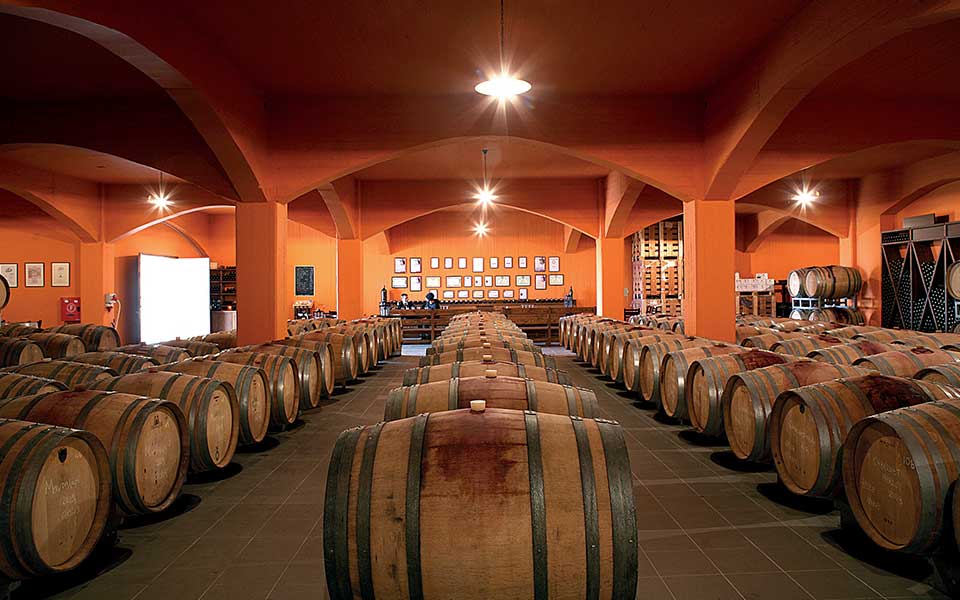
© Effie Paroutsa
What to taste
Near Dafnes: From Douloufakis, his red Dafnios, a Liatiko matured in large oak casks, and his Methode Traditionelle Sparkling wine made from Vidiano. From Silva, the new natural line-up called Grifos, particularly their Liatiko. From Idaia, the Thrapsathiri with its very fresh acidity. From Efrosini, the Mikri Evgeniki Vidiano, and from Diamantakis the newly-released Liatiko Petali which, to preserve the purity of the fruit, hasn’t undergone oak maturation.
Near Archanes and Peza: From Miliariakis, the Vilana Fumé from high-elevation vineyards in Peza. From Digenakis, the newly released single vineyard Leivades Kotsifali from dry-farmed bush vines grown in limestone soil, which delivers an elegant, understated expression of Kotsifali. From Rhous, Skipper Red, a modern blend of Mandilari and Kotsifali which is juicy, layered and rewarding. From Paterianakis, the new 3.14 natural approach Red Kotsifali. From Lyrarakis, an aged Dafni might be the star, but one shouldn’t complain about the pre-phylloxera single vineyard Aggelis Liatiko, either.
Other noteworthy wineries: Alexakis (try their excellent Vidiano), Stylianou (try his stunningly sweet Liatiko), Michalakis (indulge in the layered Gold Cuvee blend), Strataridakis (try his perfumed Muscat of Spina), Zacharioudakis (experience the white Codix, a smart blend of Vilana and Malvasia di Candia).

